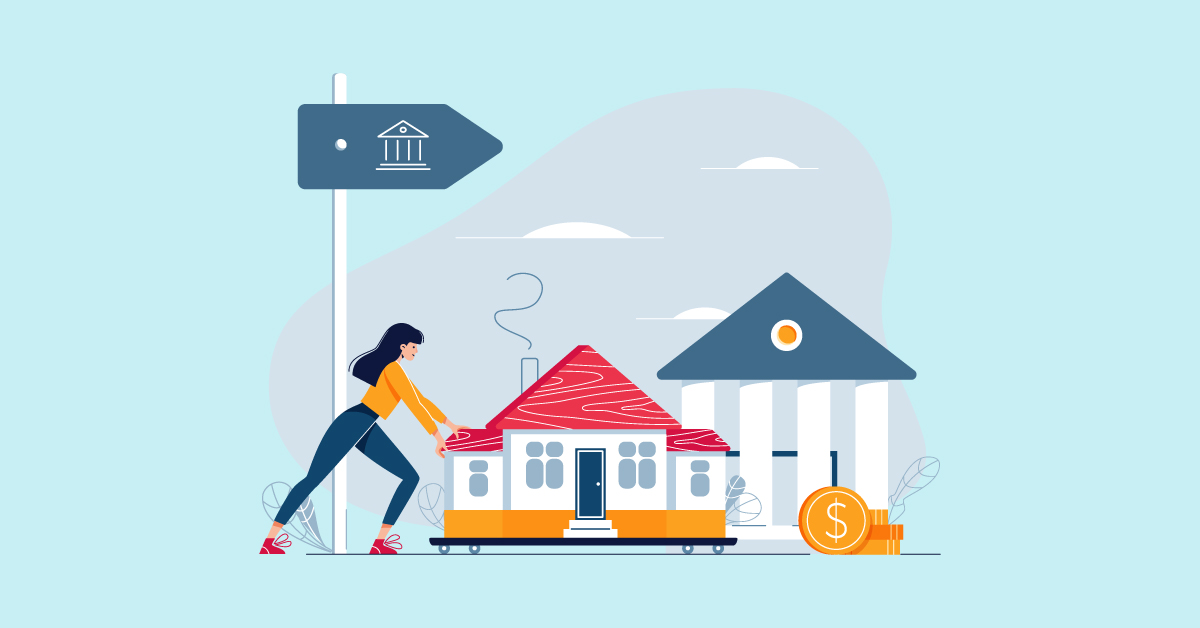A cash-out refinance might be an excellent option if you want to release some equity in your home in cash. But is it right for you? We go over how cash-out refinances work, what the requirements are and describe some pros and cons.
What Are the Requirements for a Cash-Out Refinance?
Meeting your lender’s requirements is the first step to getting a cash-out refinance. Each lender is different, and they all have their own requirements that will affect the interest rate you’re offered, the amount of cash you can borrow and the duration of the loan. It’s worth shopping around to find the best deal that meets your needs in these areas. However, there are some common refinance requirements that every borrower will need to meet.
Credit Score
The majority of lenders expect you have a credit score of at least 620 to qualify for a cash-out refinance. However, there are circumstances where lenders will require it to be higher and a couple of exceptions where lenders will accept lower ratings.
For example, suppose you are a veteran eligible for a VA loan. In that case, you may qualify with a credit score of only 580 if you leave at least 10% equity in your home after refinancing. If you want to take out all of your equity, you will still need a score of at least 620. FHA loans (which are backed by the Federal Housing Administration) may also be available with a credit score of 580.
You can easily access a free annual credit report from each reporting company; check out this US government-approved website for more information.
Debt to Income Ratio (DTI)
Almost all lenders will also expect you to have a DTI of less than 50%. But how do you work out your DTI? It’s simple: add up your monthly debts and payments, divide that by your income and multiply by 100. For example, if your monthly income is $3,000 and you have expenses and debts of $1,200, your DTI is 1200/3000 x 100 = 40%.
Again there are exceptions to this limit with VA or FHA loans. For example, some lenders may ask for a DTI of below 45%. You may also find flexibility based on the loan amount or the equity remaining in your home after you take the loan out.
Equity
If you want a cash-out refinance, you will need a sizable amount of equity in your home. Unfortunately, you also won’t be able to take out 100% of the equity except with a VA loan.
To protect yourself from market fluctuations, it’s best to leave as much equity as possible; you don’t want to find yourself with negative equity on your home. But on the other hand, you need to ensure you obtain all the cash you need to achieve the goals you set when deciding to take a cash-out refinance.
How a Cash Out Refinance Works

Once you’re happy that you’ve satisfied the refinance requirements, you can start looking into how a cash-out refinance works.
Essentially, a cash-out refinance pays off your existing mortgage with a new one with some extra cash in hand. The difference between the repayment cost of your old mortgage and the new amount you borrow is your “cash out” sum. This is in contrast to a regular refinance, where you simply replace your mortgage with a new one with a better interest rate or longer repayment period to reduce your monthly payments.
Of course, you can only borrow extra if you have equity on your home, that is, the difference between what’s owed on your mortgage and what the house is currently worth. For example, if your home’s worth $250,000 and $100,000 outstanding on the mortgage, you have $150,000 in equity. In reality, you can’t cash out all this equity as we outlined above. So, if your lender requires you to leave 20% equity in this scenario, that would be $50,000, leaving you $100,000 available to cash out.
At this point, you should work out how much cash you need. For example, get quotes from at least three contractors if you’re using the loan for some home renovations. Of course, things don’t always go to plan, so it’s best to use the middle quote to base your financial needs on rather than the cheapest. As long as this is within the amount of equity available, you can then approach lenders for quotes.
Once you’ve settled on a lender, they will want assurances of your home’s value, so they will require an appraisal to ascertain this. Once that’s done, they will ask for bank statements to confirm your DTI. Then, when the lender approves the loan, they will talk you through the final steps, and you should receive your check within 3-5 working days.
Are There Alternatives to a Cash-Out Refinance?
There are other ways to access your home’s equity without getting a cash-out refinance. The main two are Home Equity Loans and Home Equity Lines of Credit (HELOC).
When you get a Home Equity Loan, this doesn’t affect your primary mortgage as a cash-out refinance would, but it does draw on your equity similarly. A HELOC offers more flexibility, providing a line of credit you can draw upon as needed. Although these options have small closing costs compared to refinancing, they have higher interest rates, making them more suitable for borrowing smaller sums.
Should I Get a Cash-Out Refinance?
If you can get a good interest rate on the loan, getting a cash-out refinance can be a good way to access your home’s equity. If you’re using it to improve your home, it will also rebuild the equity you take out. However, using this type of loan to pay for a new car or a vacation is probably not a great idea—it’s better to save the money you would be adding to your repayments to purchase these things. However, it could be a valuable option to pay off unavoidable and unexpected expenses such as medical debts or to consolidate debts to a single lower-interest rate loan. To help you decide, here are a few more pros and cons to taking out a cash-out refinance.
Pros
- Lower interest rates than unsecured loans or secured loans separate from your mortgage payment
- Just one loan rather than paying a mortgage and separate loan payment
- Access to a higher amount of funds than credit cards or unsecured loans
- Consolidate your debts into one payment
- Will help to build your credit score
Cons
- You risk foreclosure if you don’t make the payments
- Altered terms from your original mortgage: the term may be longer, leading to you paying more interest overall
- Takes time to complete, so may not be suitable if your cash needs are urgent
- High closing costs
- You will need to increase your private mortgage interest payments
Related: 9 Tips To Consider Before Refinancing Your Mortgage Loan







